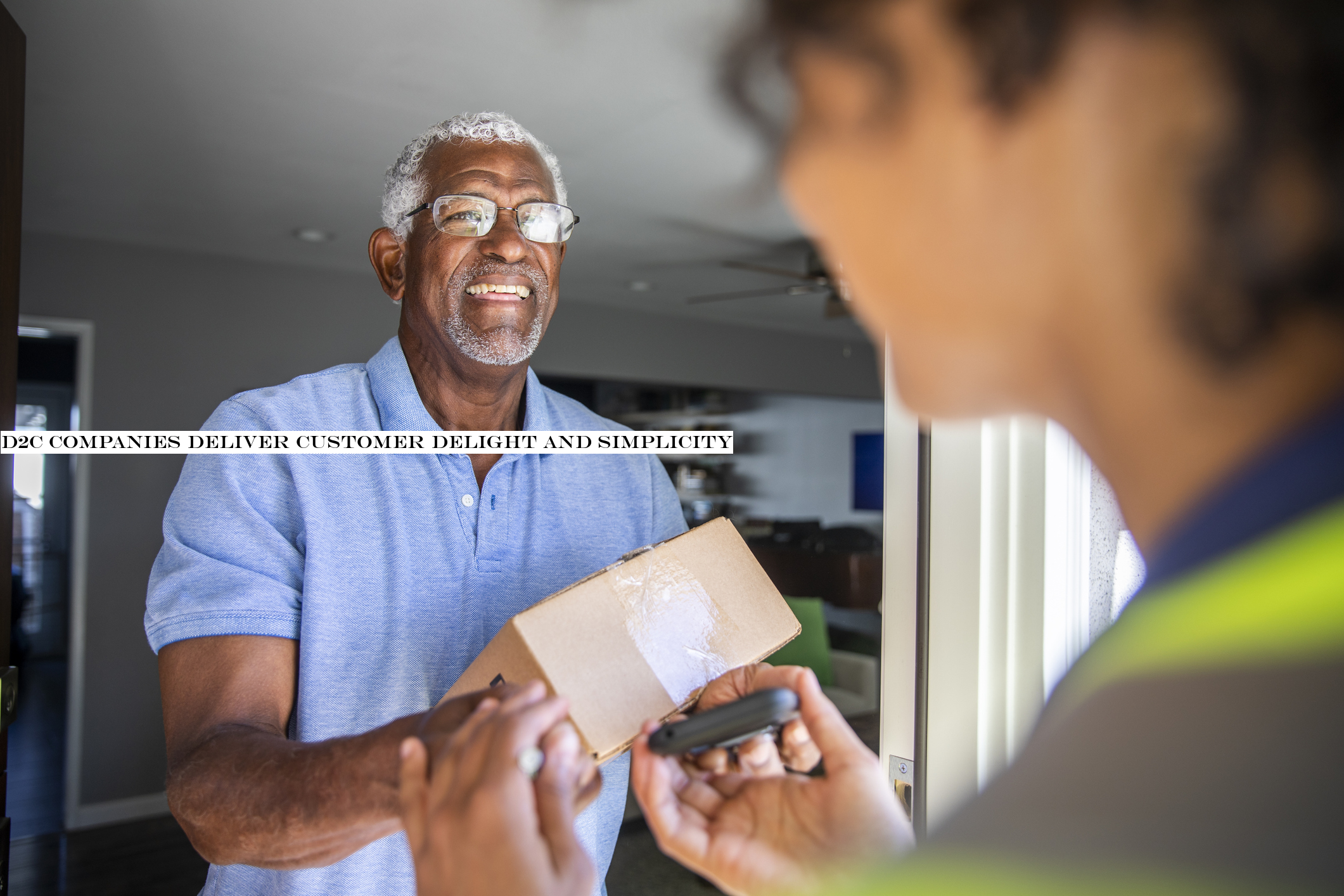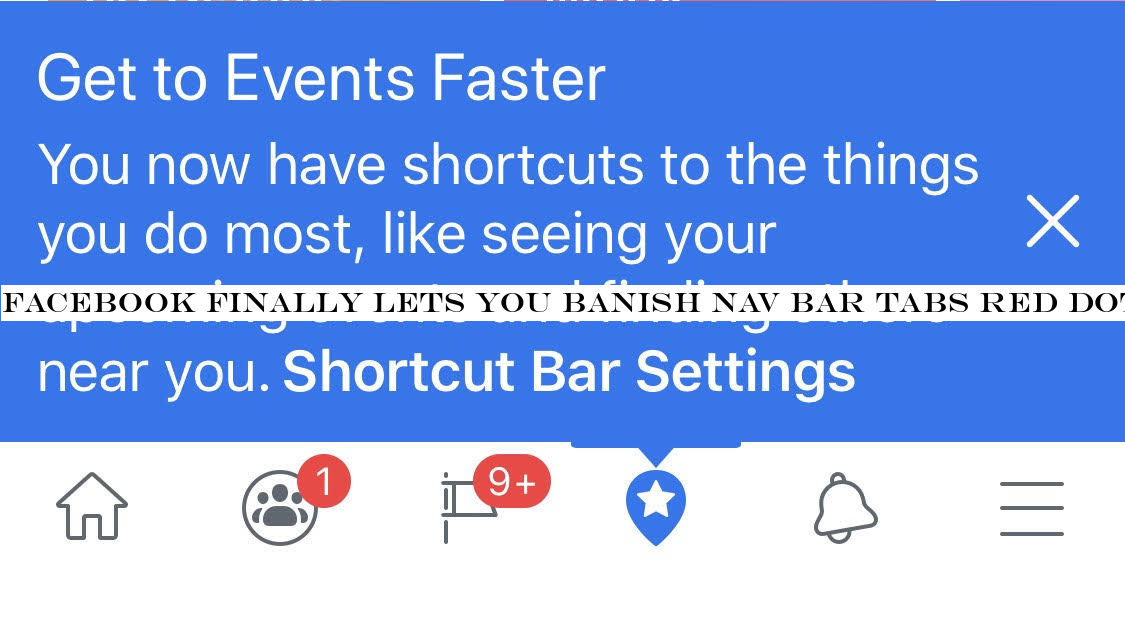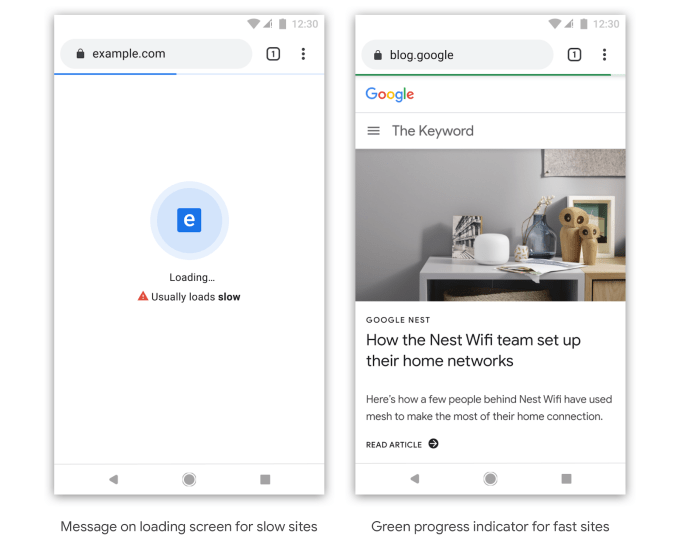Technology

As the holiday season approaches, I can feel the tension in the air: how do I make my gifts stand out?
Thankfully, there are so many fun direct to consumer (D2C) categories — from bath salts to plants, to even organic fertilizer.
A New York City-based VC firm once asked us, &there are so many products that are getting launched in the direct to consumer route. Itgood that you track them. But can you tell us which segment is likely to go direct to consumer?& In other words, they were asking us to be psychic.
We aren&t, but I never let that question go.
There are many reasons why a brand can go D2C. You could unbundle every category on Amazon and there could be a case made for going direct to consumer. Several brands that do just that, but Amazon is not the obvious place to look for all answers.
Lettake the example of plants and fertilizer. I want to gift a plant this holiday season, but I have two problems: I don&t know which plant to pick for my friend because I don&t know his preferences, and even if I find the right plant, I don&t know whether he&ll be able to keep it alive.
Generally, when people consider purchasing a plant, itnot because they woke up after having a startling dream about a fern or a ficus that won its heart — itmore likely that they looked at an empty balcony while sipping their morning coffee and thought it needed a touch of green. People aren&t buying plants; they&re buying better visuals, and a potted palm tree is a vehicle to their preferred emotional state.
But what if heunable to take care of the plants? Should I just buy some really good candles instead? Rooted, an online plant store, sorts its offerings using criteria like the amount of light required and how frequently a plant needs to be watered. As a result, I found Tim, a snake plant that&virtually indestructible and adaptable to almost any conditions.&
Some products are complex. No two plants are the same, and no two plant buyers are identical, either. Itcomplicated. You can walk into a nursery and get the plant you are drawn towards and read the instructions wrapped inside, but the onus is still on you to help it thrive.
Companies likeRootedandBloomscapeknow that you are buying an emotional state, so they help you avoid post-purchase dissonance. Instead, they offer a customer-focused product experience that starts with choosing the right plant and includes an onboarding kit that educates users, all contained within a continuous positive feedback loop delivered through carefully designed, friendly, educational content.
By going direct to consumer, brands can personalize the buying experience, optimize customer enjoyment and use, educate them at the right cadence, and ultimately, help them successfully harvest the emotions they were seeking.
This approach works for any category that is perceived to be complex. Whether itcoffee, wine, food supplements or plants, these products are complex experiences that need to be tailored to customers, and the education process could be overwhelming. Brands that get it right can achieve the right experience by going direct to consumer.
People are generally resistant to change, but they love brands that can help them find a better version of themselves. Fear of the unknown and making the wrong decision ends in post-purchase dissonance; bad brands introduces dissonance, while a good brand attenuates this fear. The good or the bad is determined by the onboarding experience, intuitive design, content, online support, customer reviews and after-sales experience.
Like batteries that store power, brands store emotional states, positive and negative; a consumerinteraction with Comcast taps into a different range of emotions than a visit to an Apple Store.
Creating comfortable footwear, for example, requires complex engineering; with unique types for walking, cycling and running, how do you figure which one is right for you? Nike Fit, an app released this year, uses AI to help customers find the optimal fit for their foot.
&Three out of every five people are likely to wear the wrong size shoe,& the company said in a statement. &Length and width don&t provide nearly enough data to get a shoe to fit comfortably. Sizing as we know it is a gross simplification of a complex problem.& The AI even tells you if your right foot is larger than your left and recommends the best sneaker; emotions unlocked! Itno wonder Nikedoubling down on its D2C channels.
Ultimately, a brand that performs well is a brand that has recognized and solved a customerproblem; ecommerce and D2C are mediums that to do precisely that. A good brand offers good experience design that brings simplicity to a complex product, magically making it seem familiar.
- Details
- Category: Technology
Read more: D2C companies deliver customer delight and simplicity
Write comment (92 Comments)Game launches these days are frequently the very worst time to play them. Plagued by bugs, server issues, balance problems and a lack of content, many &games as a service& titles are best consumed after a month or two. Not so with Hideo Kojimalong-awaited Death Stranding, which, if you&re going to play at all… you should probably play now.
This type of game comes out once every year or two: A title where the gradual discovery of mechanics and ideas by the players is part of the adventure. Being part of that vanguard of players who go in unsure of what to expect, learning by doing and sharing that information with others has a special feeling, not of exclusivity exactly, but of a collective experience.
Sure, playing the new Call of Duty on day one can be thrilling, but itnot exactly a journey of discovery. Furthermore, games like those tend to get better after the first few months as content is added, gameplay is tweaked and so on.
But just as some TV and movies are best seen with friends on the day they&re released, some games beg to be played before they become over-amply documented, their mysteries vivisected and wikified.
The most frequent entries on this list are From SoftwareDark Souls type games, the esoteric workings of which are sometimes never fully revealed even years later. Bloodborne is still yielding up its secrets even now, for instance.
The Legend of Zelda: Breath of the Wild was another one, in which it wasn&t exactly that people were finding hidden things or speculating on lore, but rather finding how open-ended the world really was and demonstrating that in ingenious ways. When someone figured out you can trick an enemy into being struck by lightning by slipping them a metal weapon in a thunderstorm, it was like a million gamers worldwide squinted, said &wait, what?& and ran to their Switch to try it.

Death Stranding is likewise &appointment gaming,& because… well, itso weird. But it definitely belongs in the company of those games that are best experienced while steaming hot, like the frequent showers you&ll see Norman Reedus take in it. I&m glad I let a friend of mine convince me to jump in right away.
Don&t worry, I won&t be spoiling anything you don&t learn in the first couple of hours. But there is a mechanic where items like ladders or climbing ropes you lay down to help navigate the terrain get shared with other people for their own use. Just as there is glory in being the first to call down lightning in Zelda, therea glory (slightly more obscure admittedly) in being the first to go a certain way and let others follow in your footsteps.
Lay down a bridge to reach a shelter more easily while carrying lots of cargo, and you may find that a day or two later, thousands of people have used it, given it &likes,& and maybe even upgraded or expanded it with their own resources.
The thing about this is that in a year or two, the locations of these bridges will have been optimized and documented for all to know, as if they were part of the gamelandscape to begin with. Wherethe fun in that? Ita pleasure knowing that the environment around you is being improvised by players all over the world.

Similarly, there are &aha& moments already occurring. You&re told directly that your characterbodily fluids seem anathema to the ghostly &BTs& that are your most serious enemies. You&re also given the option, once you&ve drunk sufficient quantities from your canteen, to have a wee. Someone made that connection and decided to wee on the horrible ghostly BTs — and it repels them!
And a million gamers squint, say &wait, what?& and run to their PS4 to try it.
That collective experience that we shared when we sat in the same room to watch the Game of Thrones finale or, before that, Lostultimately regrettable but thrilling perambulations, is present here in Death Stranding, as it has been for other games before it.
Is Death Stranding a game for everyone? Hell no. But nor was Dark Souls. Death Stranding is a game that is frequently original and odd and surprising, while also occasionally being heavy-handed, tedious and obtuse. We need more of that in the increasingly cynical and predictable world of AAA gaming.
By its nature Death Stranding is something that, if you don&t give it a hard pass (and I definitely get that), you should be playing today — not next year or even next month. Get it, then be patient, be weird, have fun and send likes.
- Details
- Category: Technology
Read more: ‘Death Stranding’ brings back appointment gaming
Write comment (91 Comments)The latest research out of Facebook sets machine learning models to tasks that, to us, seem rather ordinary — but for a computer are still monstrously difficult. These projects aim to anonymize faces, improvise hand movements and — perhaps hardest of all — give credible fashion advice.
The research here was presented recently at the International Conference on Computer Vision, among a few dozen other papers from the company, which has invested heavily in AI research, computer vision in particular.
Modifying faces in motion is something we&ve all come to associate with &deepfakes& and other nefarious applications. But the Facebook team felt there was actually a potentially humanitarian application of the technology.
Deepfakes use a carefully cultivated understanding of the facefeatures and landmarks to map one personexpressions and movements onto a completely different face. The Facebook team used the same features and landmarks, but instead uses them to tweak the face just enough that itno longer recognizable to facial recognition engines.
This could allow someone who, for whatever reason, wants to appear on video but not be recognized publicly to do so without something as clunky as a mask or completely fabricated face. Instead, they&d look a bit like themselves, but with slightly wider-set eyes, a thinner mouth, higher forehead and so on.

The system they created appears to work well, but would of course require some optimization before it can be deployed as a product. But one can imagine how useful such a thing might be, either for those at risk of retribution from political oppressors or more garden variety privacy preferences.
In virtual spaces it can be difficult to recognize someone at all — partly because of the lack of nonverbal cues we perceive constantly in real life. This next piece of research attempts to capture, catalog and reproduce these movements, or at least the ones we make with our hands.
Ita little funny to think about, but really therenot a lot of data on how exactly people move their hands when they talk. So the researchers recorded 50 full hours of pairs of people having ordinary conversations — or as ordinary as they could while suited up in high-end motion capture gear.

These (relatively) natural conversations, and the body and hand motions that went with them, were then ingested by the machine learning model; it learned to associate, for example, that when people said &back then& they&d point behind them, or when they said &all over the place,& they&d make a sweeping gesture.
What might this be used for? More natural-seeming conversations in virtual environments, perhaps, but maybe also by animators who&d like to base the motions of their characters in real life without doing motion capture of their own. It turns out that the database Facebook put together is really like nothing else out there in scale or detail, which is valuable in and of itself.
Similarly unique, but arguably more frivolous, is this system meant to help you improve your outfit. If we&re going to have smart mirrors, they ought to be able to make suggestions, right?
Fashion++ is a system that, having ingested a large library of images labeled with both the pieces worn (e.g. hat, scarf, skirt) and overall fashionability (obviously a subjective measure), can then look at a given outfit and suggest changes. Nothing major — it isn&t that sophisticated — but rather small things like removing a layer or tucking in a shirt.

Itfar from a digital fashion assistant, but the paper documents early success in making suggestions for outfits that real people found credible and perhaps even a good idea. Thatpretty impressive, given how complex this problem proves to be when you really consider it, and how ill-defined &fashionable& really is.
FacebookICCV research shows that the company and its researchers are looking fairly broadly at the question of what computer vision can accomplish. Italways nice to detect faces in a photo faster or more accurately, or infer location from the objects in a room, but clearly there are many more obscure or surprising aspects of digital life that could be improved with a little visual intelligence. You can check out the rest of the papers here.
- Details
- Category: Technology
Read more: Facebook machine learning aims to modify faces, hands and… outfits
Write comment (90 Comments)Are those red notification dots on your Facebook home screen driving you crazy? Sick of Facebook Marketplace wasting your screen space? Now you can control what appears in the Facebook appnavigation bar thanks to a new option called Shortcut Bar Settings.
Over the weekend TechCrunch spotted the option to remove certain tabs like Marketplace, Watch, Groups, Events, Profile, Friend Requests, News, Today In, Gaming and Dating or just silence their notification dots. In response to our inquiry, Facebook confirms that Shortcut Bar Settings is now rolling out to everyone, with most iOS users already equipped and the rest of Android owners getting it in the next few weeks.

The move could save the sanity and improve the well-being of people who don&t want their Facebook cluttered with distractions. Users already get important alerts that they could actually control via their Notifications tab. Constant red notification counts on the homescreen are an insidious growth hack, trying to pull in peopleattention to random Group feeds, Event wall posts and Marketplace.
&We are rolling out navigation bar controls to make it easier for people to connect with the things they like and control the notifications they get within the Facebook app,& a Facebook spokesperson tells me.
Back in July 2018, Facebook said it would start personalizing the navigation bar based on which utilities you use most. But the navigation bar seemed more intent on promoting features Facebook wanted to be popular, like its Craigslist competitor Marketplace, which I rarely use, rather than its long-standing Events feature, which I access daily.

To use the Shortcut Bar Settings options, tap and hold on any of the shortcuts in your navigation bar thatat the bottom of the Facebook homescreen on iOS and the top on Android. You&ll see a menu pop up letting you remove that tab entirely, or leave it but disable the red notification count overlays. That clears space in your nav bar for a more peaceful experience.
You&ll also now find in the three-line More tab -> Settings - Privacy -> Settings -> Shortcuts menu the ability to toggle any of the Marketplace, Groups, Events and Pages tabs on or off. Eagle-eyed reverse engineering specialist Jane Manchun Wong spotted that Facebook was prototyping this menu and the Notification Dots settings menu thatnow available too.
A Facebook spokesperson admits people should have the ability to take a break from notifications within the app. They tell me Facebook wanted to give users more control so they can have access to whatrelevant to them.
For all of Facebooktalk about well-being, with it trying out hiding Like counts in its app and Instagram (this week starting in the U.S.), therestill plenty of low-hanging fruit. Better batching of Facebook notifications would be a great step, allowing users to get a daily digest of Groups or Events posts rather than a constant flurry. Its Time Well Spent dashboard that counts your minutes on Facebook should also say how many notifications you get of each type, how many you actually open, and let you disable the most common but useless ones right from there.
If Facebook wants to survive long-term, it can&t piss off users by trapping them in an anxiety-inducing hellscape of growth hacks that benefit the company. The app has become bloated and cramped with extra features over the last 15 years. Facebook could get away with more aggressive cross-promotion of some of these forgotten features as long as it empowers us to hide what we hate.
- Details
- Category: Technology
Read more: Facebook finally lets you banish nav bar tabs red dots
Write comment (97 Comments)Is it the web page thatslow or is it your network connection? In the future, GoogleChrome web browser may have an answer for you. Google announced today a plan to identify and label websites that typically load slowly by way of clear badging. The company says it may later choose to identify sites that are likely to be slow based on the userdevice and current network conditions, as well.
Google hasn&t yet determined how exactly the slow websites will be labeled, but says it may experiment with different options to see which makes the most sense.
For example, a slow-loading website may show a &Loading…& page that includes a warning, like a caution icon and text that reads &usually loads slow.& Meanwhile, a fast website may display a green progress indicator bar at the top of the page instead of a blue one.
And for links, Chrome may use the context menu to help users know if the site will be slow so you can decide whether or not you want to click.

In the long-term, Chromegoal will be to identify and badge websites offering &high-quality& experiences, which may include other factors beyond just the websitespeed. The company didn&t yet detail what those other factors may be, but says the identification process will include more stringent criteria thatrolled out gradually over time. However, the goal will be to make these &good user experiences& something any web developer can achieve.
In the meantime, Google suggests web developers visit its resources focused on site performance, including its learning platform web.dev./fast;online tool for optimization suggestions, PageSpeed Insights;and personalized advice tool, Lighthouse.
A faster, more usable web benefits Google, as it helps the company better cater to its primarily mobile users. Since 2015, the majority of Google usersstart their searches from mobile devices. But that shift has required new ways of indexing and ranking pages and serving users whose connection speeds vary and who may not have powerful devices.
Google now uses a websitemobile version when indexing its pages, and it offers fast AMP pages to help mobile users get to information more quickly. It makes sense that a next step would be to nudge site owners themselves to speed things up or risk getting labeled as a &slow& website.
This sort of feature would particularly help Google users in emerging markets, like India, where decent bandwidth is often lacking and low-end smartphones are prevalent.
&Speed has been one of Chromecore principles since the beginning & we&re constantly working to give users an experience that is instant as they browse the web,& a Chrome blog post explained. &That said, we have all visited web pages we thought would load fast, only to be met by an experience that could have been better. We think the web can do better…,& it read.
The plans were announced at the Chrome Developer Summit, alongside other developer-focused updates. This included a preview of &Web Bundles,& an API that lets developers distribute web content across any format, like email, FTP or even USB. Plus, Portals, a web experience previously announced at Google I/O, was demonstrated with early partner Fandango.
- Details
- Category: Technology
Read more: Google Chrome to identify and label slow websites
Write comment (99 Comments)Amazon is opening its first non-Whole Foods grocery store in the LA neighborhood of Woodland Hills, the retailer today confirmed. The news of the new store was first reported by CNET, which spotted several job postings referencing the location, including those for a zone leader, grocery associates and a food service associate.
Unlike Amazongrowing number of cashierless Amazon Go convenience stores, the new store will feature conventional checkout technology, says Amazon. CNBC also noted the store may be located in a former Toys &R& Us location at a shopping center.
Amazon declined to offer more details about its plans for the store or others like it, but did confirm itopening a grocery store in Woodland Hills in 2020.
The retailerplans to expand its grocery operations beyond its Whole Foods brand was previously reported by The Wall Street Journal in October. Amazon, the report claimed, was planning a chain of dozens of grocery stores across the U.S., beginning with sites in LA, Chicago and Philadelphia. Woodland Hills was mentioned as being among the first locations, along with Studio City and Irvine.
Other locations being scouted included those in the New York metro area, New Jersey and Connecticut.
Amazoninterest in an expanded brick-and-mortar presence comes at a time when Walmartgrocery business has been booming, with some reports claiming it now dominates those from rivals, including Amazon, Instacart and others.
Walmart in Q2 reported 37% increase in e-commerce sales, supported by the strong growth in online grocery. Much of its success in that area can be attributed to the proximity of its stores to its customer base. With no markups on food prices (as some of its competitors do), itaffordable to order from Walmart Grocery online, then drive to pick up the groceries — or pay a small fee to have them delivered.
AmazonWhole Foods, meanwhile, has long had a reputation as a more expensive store. Following the acquisition of the grocery chain, Amazon has tried to combat that notion with weekly sales and discounts for Prime members. But Whole Foods is still considered to be a more high-end store, and its prices continue to reflect that.
The new Amazon grocery stores, on the other hand, will be targeted at the mainstream consumer who typically shops from more traditional, or even value, grocery chains.
&When it comes to grocery shopping, we know customers love choice and this new store offers another grocery option thatdistinct from Whole Foods Market, which continues to grow and remain the leader in quality natural and organic food,& an Amazon spokesperson told CNET.
They said Whole Foods would continue to expand, despite the launch of the new Amazon grocery stores. Whole Foods opened 17 locations this year and has more planned, the company said.
- Details
- Category: Technology
Read more: Amazon to open its first non-Whole Foods grocery store in 2020
Write comment (93 Comments)Page 383 of 5614

 13
13